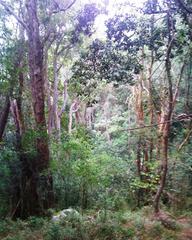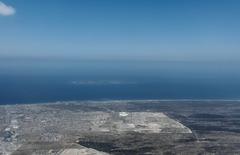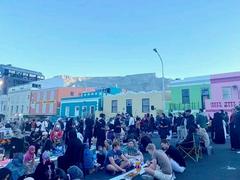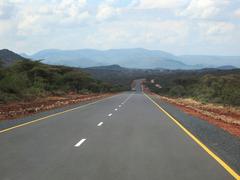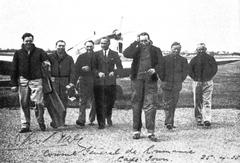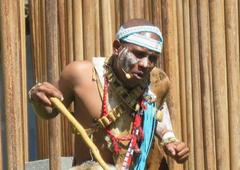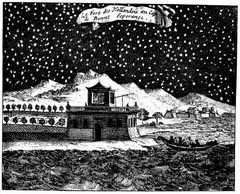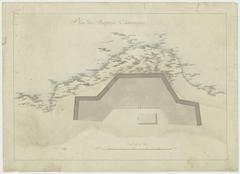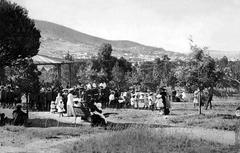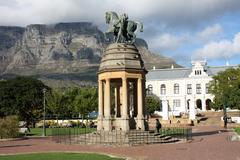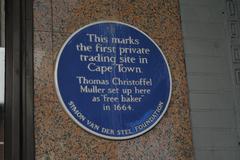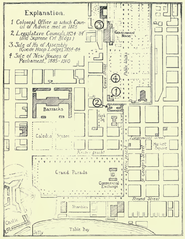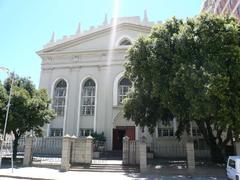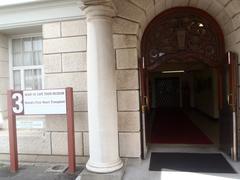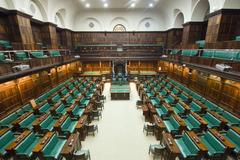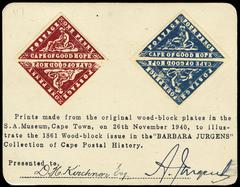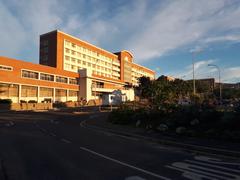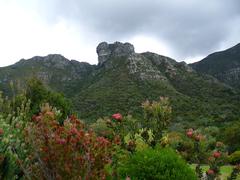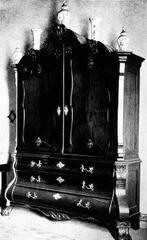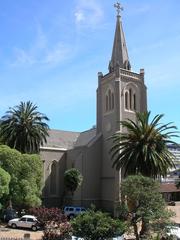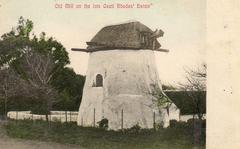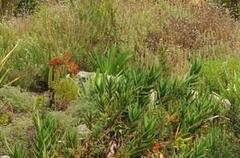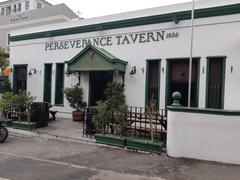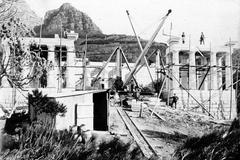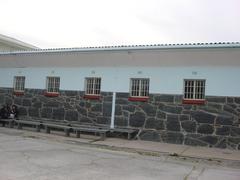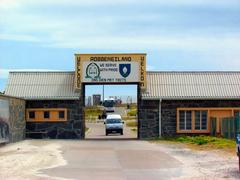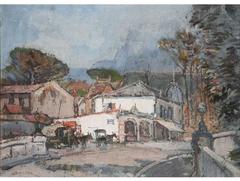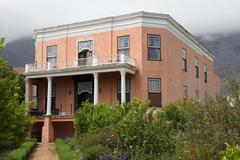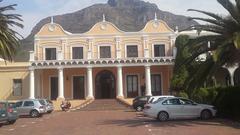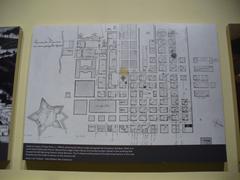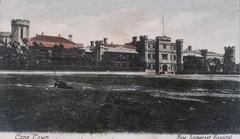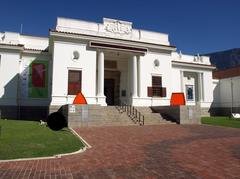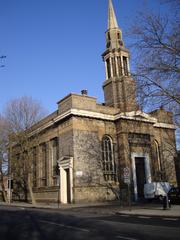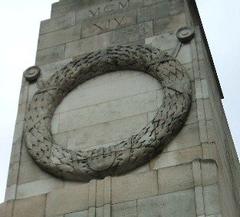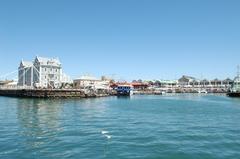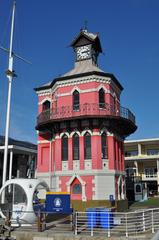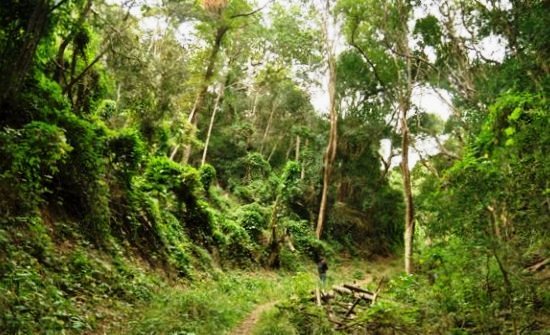
Complete Guide to Visiting De Hel Trail, Cape Town, South Africa
Date: 31/07/2024
Introduction
Nestled in the heart of Cape Town’s Constantia suburb, De Hel Trail—also known as Gamkaskloof—presents a unique blend of natural splendor and historical intrigue. This guide aims to equip you with all the essential information for a memorable visit, covering aspects such as its rich history, visitor details, and practical travel tips. Whether you’re a history aficionado or a nature enthusiast, De Hel Trail offers an experience that caters to varied interests.
The valley of Gamkaskloof was first inhabited by trekboers—wandering farmers who migrated inland from Cape Town. According to local lore, a 19th-century farmer stumbled upon this secluded paradise while searching for lost cattle. The community lived in isolation for over a century, relying on multi-day treks along rocky paths or a steep route known as “The Ladder” to access the outside world (AFKTravel).
In 1962, a dirt road was constructed to connect Gamkaskloof to the rest of the Western Cape. Ironically dubbed “The Road to Hell,” this road was intended to modernize the isolated community but instead facilitated a gradual exodus. Within three decades, the valley’s population dwindled, with many selling their properties to Cape Nature (AFKTravel).
Today, Gamkaskloof is part of the Swartberg Nature Reserve, managed by Cape Nature. The area has been preserved as a historical site, with many of the old farm cottages restored for self-catering accommodations. Activities range from picnicking and fishing to mountain biking, making it a versatile destination for all kinds of outdoor enthusiasts (AFKTravel).
This comprehensive guide will provide you with all the necessary details, from visiting hours and ticket prices to nearby attractions and travel tips. By the end of this article, you’ll be well-prepared for your visit to this captivating historical and natural landmark.
Table of Contents
- [Introduction](#introductionintroduction)
- [Historical Significance](#historical-significancehistorical-significance)
- [Early Inhabitants and Discovery](#early-inhabitants-and-discoveryearly-inhabitants-and-discovery)
- [The Construction of the Road](#the-construction-of-the-roadthe-construction-of-the-road)
- [The Decline of the Community](#the-decline-of-the-communitythe-decline-of-the-community)
- [Preservation and Modern-Day Significance](#preservation-and-modern-day-significancepreservation-and-modern-day-significance)
- [The First Car in the Valley](#the-first-car-in-the-valleythe-first-car-in-the-valley)
- [Flora and Fauna](#flora-and-faunaflora-and-fauna)
- [The Swartberg Pass](#the-swartberg-passthe-swartberg-pass)
- [Cultural Legacy](#cultural-legacycultural-legacy)
- [Visitor Information](#visitor-informationvisitor-information)
- [Tickets and Opening Hours](#tickets-and-opening-hourstickets-and-opening-hours)
- [Travel Tips](#travel-tipstravel-tips)
- [Nearby Attractions](#nearby-attractionsnearby-attractions)
- [Accessibility](#accessibilityaccessibility)
- [FAQ](#faqfaq)
- [Conclusion](#conclusionconclusion)
- [Sources](#sourcessources)
Historical Significance
Early Inhabitants and Discovery
The area now known as De Hel, or Gamkaskloof, was first inhabited by trekboers, wandering farmers who migrated inland from Cape Town. According to local legend, a 19th-century farmer discovered the valley while searching for lost cattle. These early settlers lived in relative isolation for over a century, relying on multi-day treks along rocky paths or a steep route known as “The Ladder” to access the outside world (AFKTravel).
The Construction of the Road
In 1962, a dirt road was constructed to connect Gamkaskloof to the rest of the Western Cape. This road, often referred to as “The Road to Hell,” was intended to bring modern conveniences to the isolated community. However, the road’s construction had the opposite effect. Within 30 years, the valley’s 120 inhabitants had left, many selling their properties to Cape Nature (AFKTravel).
The Decline of the Community
The road’s construction marked the beginning of the end for the Gamkaskloof community. The ease of access to the outside world led to a gradual exodus of residents. By the late 20th century, the valley was nearly deserted. The last remaining resident, Annetjie Joubert, now runs a guest house and restaurant in the valley, offering visitors a glimpse into the area’s past (AFKTravel).
Preservation and Modern-Day Significance
Today, Gamkaskloof is part of the Swartberg Nature Reserve, managed by Cape Nature. The area has been preserved as a historical site, with many of the old farm cottages restored and available as self-catering accommodations. The valley offers a variety of activities, including picnics, fishing, and mountain biking, as well as a four-day, 25km donkey trail to Calitzdorp (AFKTravel).
The First Car in the Valley
One of the most intriguing historical artifacts in Gamkaskloof is a Morris Minor, the first car to arrive in the valley. This vehicle, which predated the road by four years, was dragged through the mountains by two brothers with the help of a team of donkeys. The car now sits rusted and worn, a testament to the ingenuity and determination of the valley’s early inhabitants (AFKTravel).
Flora and Fauna
Despite its harsh climate, Gamkaskloof is rich in biodiversity. The valley is home to over 150 bird species and various wildlife, including the klipspringer, a small antelope species. The area’s unique flora and fauna make it a popular destination for nature enthusiasts and photographers (AFKTravel).
The Swartberg Pass
The Swartberg Pass, a vertiginous dirt road hugging the sides of the Swartberg Mountains, is one of the most spectacularly scenic roads in South Africa. Designed by famed engineer Thomas Bain and constructed with the help of 200 local convicts, the pass opened in 1888. It remains a popular route for drivers and cyclists, offering breathtaking views and a challenging drive (AFKTravel).
Cultural Legacy
The cultural legacy of Gamkaskloof is preserved through the stories and artifacts left behind by its former residents. Visitors can explore the valley’s history at the information center, which offers insights into local folklore and flora. The preserved farm cottages and the guest house run by Annetjie Joubert provide a tangible connection to the valley’s past (AFKTravel).
Visitor Information
Tickets and Opening Hours
De Hel Trail is open to visitors year-round. The visiting hours are from 8 AM to 5 PM daily. Tickets can be purchased at the entrance or online through the official Cape Nature website. The ticket prices are as follows: Adults - $10, Children (ages 6-12) - $5, Children under 6 - Free.
Travel Tips
Visitors are advised to wear comfortable hiking shoes and bring plenty of water and snacks. The trail can be challenging, so be prepared for a rugged adventure.
Nearby Attractions
While in Cape Town, consider visiting other historical sites such as the Castle of Good Hope and the District Six Museum.
Accessibility
De Hel Trail is accessible by car, but the road is steep and narrow. Visitors with mobility issues should exercise caution.
FAQ
Q: What are the visiting hours for De Hel Trail?
A: The visiting hours are from 8 AM to 5 PM daily.
Q: How much are tickets for De Hel Trail?
A: Tickets are $10 for adults, $5 for children aged 6-12, and free for children under 6.
Conclusion
The historical significance of De Hel Trail and Gamkaskloof lies in its unique blend of natural beauty, cultural heritage, and historical intrigue. From its early days as an isolated farming community to its modern status as a preserved historical site, the valley offers a fascinating glimpse into the past. Whether you’re a history buff, nature enthusiast, or adventure seeker, a visit to De Hel Trail promises a memorable and enriching experience.
For more travel tips and updates, download our mobile app Audiala and follow us on social media. Don’t forget to check out our other related posts about Cape Town’s historical sites.
Sources
- AFKTravel, 2018, Author south-africa-road-to-hell

